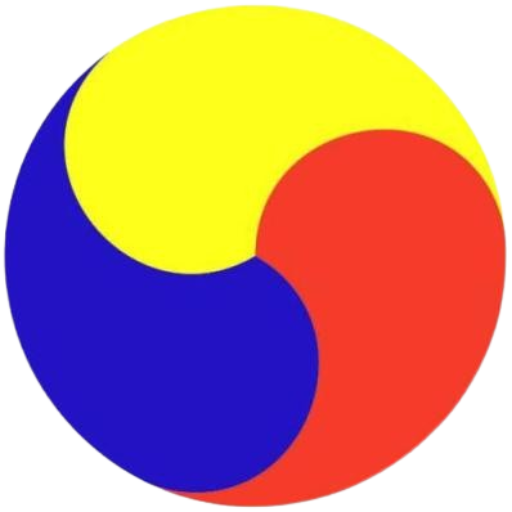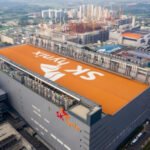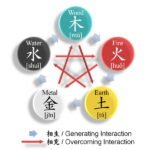
Global memory chip markets, long weighed down by excess inventories and sagging demand, are showing early signs of a thaw.
South Korea’s exports of general-purpose DRAM chips have risen significantly for four straight months, challenging gloomy projections of a prolonged downturn and stirring expectations of a broader recovery in the chip industry.
For an industry all too familiar with boom-and-bust cycles, that would be a welcome anomaly, analysts said.
According to the Korean alternative data platform KED Aicel on Tuesday, Korea’s DRAM exports reached 2.69 trillion won ($1.9 billion) in the first 20 days of June, up 25.5% from the year-earlier period.

The rise follows a 27.8% on-year increase for the month of March.
The June export value excludes more complex multi-chip packages such as high-bandwidth memory (HBM) products.
The data defy the prevailing narrative of a semiconductor winter. Instead, the figures point to a fast-tightening supply-demand dynamic in the market for conventional DRAM chips — the kind used in PCs and basic servers.
FACTORS BEHIND RECENT GAINS
Analysts cite several factors behind the recent gains.
Leading memory suppliers — Samsung Electronics Co., SK Hynix Inc. and Micron Technology Inc. — have begun winding down production of older DDR4 chips.

Meanwhile, downstream buyers, particularly those in the US, are stockpiling inventory to hedge against uncertainties over the Trump administration’s tough tariff policy.
Heavy investment in cutting-edge HBM manufacturing has also diverted capacity away from legacy chips, intensifying a shortfall in the general-purpose DRAM segment, analysts said.
“While the macro environment remains volatile, the pace and magnitude of recent price increases are unusual,” said a Seoul-based strategist at a global investment bank. “The current DRAM cycle is showing atypical behavior.”
Ryu Hyung-geun, a Daishin Securities Co. analyst, said that the recent rebound in product prices will strengthen the belief that the general-purpose DRAM cycle will not abruptly collapse.
“In this case, expectations for profit growth at major semiconductor companies from next year onward will increase further,” he said.

DDR4, DDR5 CHIP PRICES ON UPWARD TREND
According to Taiwan-based market tracker TrendForce, major DDR4 chip prices have risen more than 20% over the past few weeks.
The spot price for a 16 Gb DDR4 3200 chip more than doubled in just four weeks — from $5.6 on May 23 to $11.5 as of June 20.
Newer DDR5 4800/5000 chips, used in premium laptops, also rose 9% to $6 over the same period.
The upward trend comes after prices plummeted for over a year amid China-driven oversupply and weakening demand.
The upturn, which began in April, has since gained momentum as the three major memory makers — Samsung, SK Hynix and Micron — decided to stop DDR4 supplies and buyers, particularly PC makers and IT equipment makers, scrambled to secure inventory ahead of expected US tariff hikes on components from China and other countries.

As a result, Korea’s DRAM exports have grown steadily since a 15.7% on-year decline in February.
Korean DRAM exports grew 27.8% in March, 38% in April, 36% in May and 25.5% in the first 20 days of June.
TrendForce now expects general-purpose DRAM to rise 18–23% in the third quarter.
“Current supply constraints mean many buyers cannot secure what they need,” according to TrendForce. “Prices could climb further, faster.”
MORGAN STANLEY’S ‘WINTER LOOMS’ REPORT IN 2024
The bullish tone marks a sharp break from last year’s sentiment.
In its Sept. 15 research note titled “Winter Looms,” Morgan Stanley, warning of an AI bubble, presented a bearish view of Korean memory chipmakers, citing weak demand for general DRAM and an estimated oversupply of AI-specific HBM chips.

The US brokerage firm cut its rating on SK Hynix two notches to underweight from overweight and slashed its price target, citing its fading pricing power.
It also cut the target price for Samsung Electronics by nearly a third.
Morgan Stanley’s lead chip analyst, Shawn Kim, now says that the downturn may be shorter and less severe than feared.
The current cycle is behaving differently, according to his research note dated June 13.
He said the combination of AI-related demand, proactive inventory building and the phase-out of older products is softening the downside.
The market could begin finding its bottom by early 2026, an earlier timeline than previously projected, he said.

INVESTOR ATTENTION BACK TO SAMSUNG
That shift is turning investor attention back to Samsung, which has underperformed SK Hynix amid concerns it was falling behind in the fast-growing HBM segment.
While Samsung’s shares have climbed 12.9% year-to-date, they remain 27% below year-ago levels. SK Hynix, by contrast, has surged 50.7% this year.
J.P. Morgan said in a recent research note that Samsung’s recovery may hinge less on closing the HBM gap and more on the performance of conventional DRAM chips.
Investors are closely watching Micron, often seen as a bellwether for the memory market, as the firm is set to report quarterly earnings on June 25.
Strong results could further validate the growing sense that the worst is over for commodity DRAM, and that a new cycle may already be taking shape, analysts said.
By Tae-Ho Lee and Eui-Myung Park
thlee@hankyung.com
In-Soo Nam edited this article.















